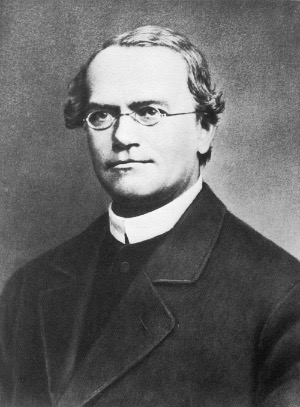March 18th, 2020

Gregor Mendel was the son of a farmer; he was bright but couldn’t afford to go to college, so he became an Augustinian friar and the order paid for his education. He studied philosophy and physics and taught physics on a part-time basis. He was also interested in astronomy and meteorology, publishing a number of papers on these subjects. He was curious about the processes of biological inheritance, and carried out experiments with a number of species. But it was with peas that he really nailed down the specifics.
He identified seven basic traits of peas that he could unambiguously trace through multiple generations: seed shape, flower color, seed coat tint, pod shape, unripe pod color, flower location, and plant height. He bred pea plants, carefully pollinating specific plants with pollen from other plants, keeping precise records of every one of the 28,000 plants that he bred over a ten-year period. Poring over his data, he figured out how those traits passed from one generation to the next. In the process, he developed the basic laws of genetics. He published his work in 1865, but nobody understood it. Shortly thereafter, he was promoted to the position of abbot of his monastery, and his administrative responsibilities were so heavy that he no longer had time for scientific studies. He died in 1884.
Mendel's work was overlooked for two reasons. First, most people misunderstood it as a pedestrian study of plant hybridization; they did not appreciate the larger theoretical issues that Mendel raised. To put it brutally, they thought he was talking about peas when he was actually talking about genetics.
The second problem was that his work appeared just as the controversy over Darwin’s theory of evolution was becoming most intense. The Darwinians were too busy defending the theory to notice that Mendel had provided them with the mechanism by which evolution took place. Moreover, biologists were satisfied with their existing theory of inheritance, which held that each descendant inherited a blend of its parents’ traits.
It wasn’t until about 1900 that biologists realized that the blended inheritance theory simply did not match reality. The child of parents with blue eyes and brown eyes did not have bluish-brown eyes; they were either blue or brown. In trying to understand how this happened, three biologists all independently developed the same basic ideas that Mendel had already figured out. When somebody stumbled upon Mendel’s work, everybody agreed that he had answered the question long before anybody else had known enough to ask it.
